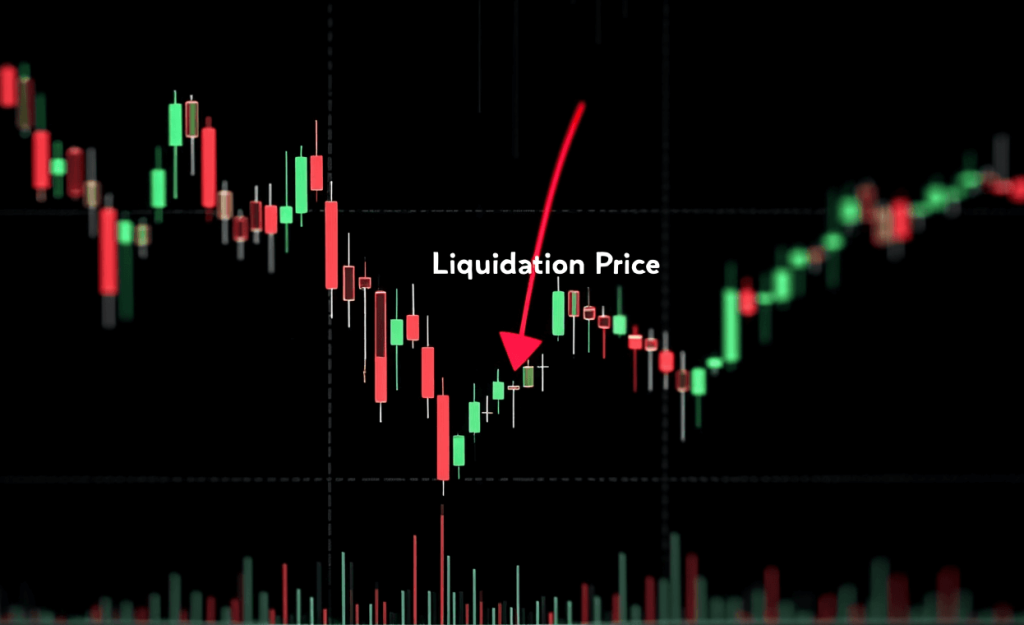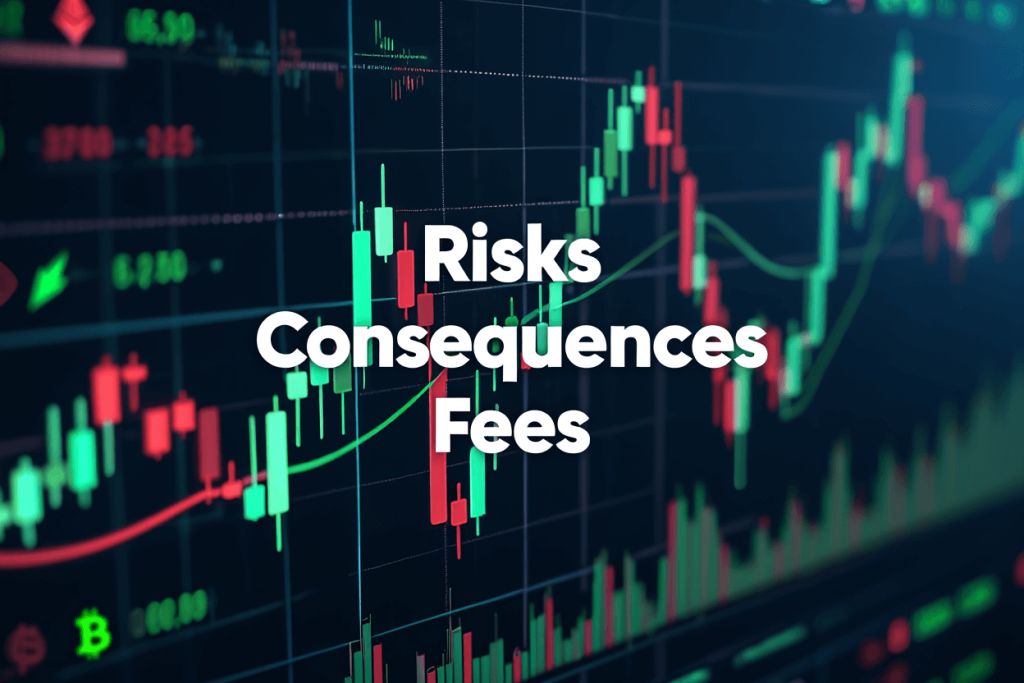Physical Address
304 North Cardinal St.
Dorchester Center, MA 02124
Physical Address
304 North Cardinal St.
Dorchester Center, MA 02124

In the world of cryptocurrency trading, what is the Liquidation Crypto meaning in the context of cryptocurrency trading? Liquidation refers to the forced closing of a trader’s position by an exchange when their account balance (or collateral) can no longer support the open leveraged trade. This typically happens on derivatives or margin trading platforms rather than simple spot markets. While liquidation exists in traditional finance, think of selling off assets to cover debts, in crypto, it’s often an automated process triggered by sharp price moves and the use of leverage.
Example: Suppose you use $500 as margin to open a $5,000 leveraged Bitcoin position (10x leverage). If the price drops and your margin can’t cover further losses, the exchange will auto-sell your position, this is liquidation. The system ensures you can’t lose more than your collateral, protecting both you and the platform.
This core concept sets the stage for exploring when and how liquidation occurs, its risks, and how you can avoid it.
Liquidation is relevant in leveraged trading, where you borrow funds to amplify your position. In basic spot trading, where you buy and sell crypto with your own funds, liquidation doesn’t exist because you can’t lose more than you put in. Liquidation risk appears only when you’re trading futures, margin positions, or perpetual swaps, using borrowed capital.
Example: Imagine a trader opens a $10,000 Bitcoin position with $1,000 margin (10x leverage). If BTC drops 10%, their position’s value falls to $9,000. Their margin is now fully depleted, they’re liquidated. Most exchanges (Binance, Bybit, OKX) have real-time systems that execute this the moment your maintenance margin is breached, sometimes via a liquidation engine or insurance fund.
The liquidation price is the specific market price at which your position will be closed automatically because your margin has shrunk too much. It’s dynamically calculated based on: your entry price, leverage used, collateral amount, fees, and sometimes funding rates.

Visual summary: Margin falls → Warning alert → Margin dips below threshold → Forced sale/liquidation → Any remaining funds returned to you.
Voluntary liquidation happens when traders close their positions themselves, usually to manage risk, lock in profits, or prevent bigger losses. You can manually exit a trade at any time before your margin is depleted, giving you more control over the outcome.
Forced liquidation occurs when the exchange system automatically closes your position because your margin has fallen below the required threshold. This is non-negotiable and aimed at preventing negative balances, ensuring you (and the platform) don’t owe more than your initial stake.
| Aspect | Voluntary Liquidation | Forced Liquidation |
|---|---|---|
| Who Triggers? | Trader (manual) | Exchange (automatic) |
| When? | Anytime before margin is depleted | When margin < maintenance threshold |
| Consequence | Select timing and loss/profit | All remaining margin can be lost |
| User Choice? | Full control | No control |
Understanding these liquidation types clears up confusion, what you can control, what you can’t, and how risk is handled in crypto trading.
Margin is the amount of money or crypto you deposit to open a leveraged trade. Think of it as your security deposit. If losses eat up your margin, the position risks being liquidated.
Leverage is borrowed capital that amplifies both your potential profits and losses. For example, 5x leverage means you control a position five times larger than your collateral. But you’re exposed to five times the risk, too, liquidation can occur with much smaller price moves.
Collateral in crypto trading is the actual asset (fiat or crypto) you post to back your leveraged position. It’s what’s at risk, the exchange will sell it in liquidation to cover any outstanding debts from your trade.
| Term | What It Means |
|---|---|
| Margin | Your deposit backing a leveraged position |
| Leverage | How many times your position is amplified |
| Collateral | Assets at risk of being sold if losses occur |
| Maintenance Margin | Minimum collateral to keep the trade open |
| Margin Call | Warning about low margin |
| Liquidation Price | Price point at which forced sell-off happens |
Grasping these terms helps you manage risk and understand how liquidation works in the evolving crypto trading landscape.
You open a $1,000 BTC position using 10x leverage, so you supply just $100 as margin. If BTC’s price falls by 10%, your entire margin is wiped out, triggering a forced liquidation. The exchange steps in, closing your position automatically, leaving you with little or nothing from your original $100 margin.
Let’s say you use $500 margin with 5x leverage to open a $2,500 Ethereum long position. If Ether’s price drops by 18% (depending on platform fees and maintenance margin requirements), your remaining margin equals the maintenance threshold. If the price falls further, the system liquidates your position to prevent additional losses.
Visualizing scenarios helps you see how margin, leverage, and price movements combine to trigger forced liquidations.
Here are some Risks, Consequences, and Fees of Liquidation:

Understanding all consequences, losses, fees, account status, and broader market effects, prepares you to manage risk more responsibly.
Combining these strategies can meaningfully reduce your chances of forced liquidation and increase the sustainability of your trading.
Using these tools can buy you time and options when markets move suddenly, providing a crucial edge in volatile environments.
Binance uses real-time liquidation engines and insurance funds to manage liquidations and spread risks across users. Bybit has both full and partial liquidation models, offering more options for experienced traders. Coinbase (for derivatives) and OKX provide user-friendly dashboards showing precise liquidation prices, margin calculators, and risk warnings.
| Platform | Liquidation Policy | User Features |
|---|---|---|
| Binance | Real-time, automatic, insurance fund | Alerts, calculators, partial liquidation |
| Bybit | Full/partial liquidation, ADL system | Leverage slider, detailed risk stats |
| OKX | Margin/risk warning system | Custom alerts, easy one-click close |
| Coinbase (Deriv.) | Simple liquidation engine | Integrated margin monitoring |
On DeFi lending and trading platforms like Aave, Compound, or dYdX, liquidation is handled by on-chain smart contracts. If collateral ratios breach requirements, bots or third-party liquidators compete to close your position automatically, earning a bonus (liquidation incentive). These systems are transparent and permissionless, but there’s no recourse if the process fails, positions are closed instantly based on pre-set rules.
Platform design, feature set, and transparency can all affect how fair, and painful, the liquidation process feels to traders.
Here are glossary of crypto liquidation terms that you need to knows:

Internal Reading Recommendations:
What Does FDV Mean in Crypto? – Understand how Fully Diluted Valuation impacts token valuation and trading decisions.
What Does Degen Crypto Meaning? – Learn about high-risk trader behavior and its connection to liquidation events.
FDV Crypto Meaning – Explore the role of token supply and value perception in market risk.
Cryptocurrency Section – Browse other crypto topics to deepen your understanding of trading mechanics, DeFi, and risk.
Liquidation in crypto is a critical concept for anyone trading with leverage. Understanding how liquidation works, the key terms, platform differences, and real-world scenarios, helps you avoid costly mistakes. By learning to spot warning signs, using effective risk management, and leveraging the best tools available, you can protect your assets and trade with greater confidence. Stay informed and proactive: in the fast-evolving crypto landscape, knowledge is your most powerful tool against unnecessary losses and forced liquidation events.
Web Tai Chinh is a portal that updates news and information related to finance quickly and accurately, helping users have an overview before investing, clearly understanding concepts and terms related to Finance.
📞 Contact: 055 937 9204
✉️ Email: webtaichinh@gmail.com
📍 Address: 13 Ho Tung Mau, An Binh, Di An, Binh Duong